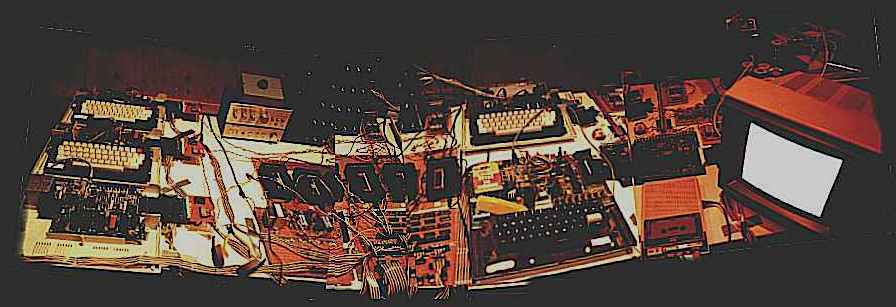
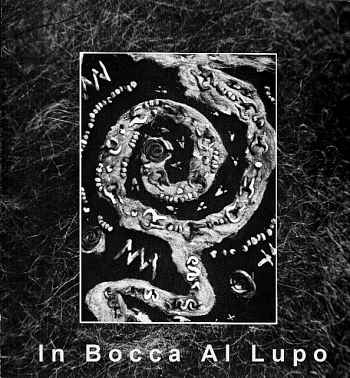
sculpture by Fernanda D'Agostino
sound installation by Dennis Báthory-Kitsz

Sound is in long, solemn waves, consisting of deep pulses punctuated by more percussive elements. Instrumentation might include primitive stringed instruments as well as natural sounds, and possibly human voices, throat singing, etc.
Quiet interludes will occur in response to the entrance, presence and speed and quality of movement of the viewer. Pools of silence will follow the busy viewer. Environmental sound will gradually return to the viewer who stands quietly listening and watching.
Environmental sound corresponds to the "presence" created by the interaction of the felt figures and the architectural environment. As they evoke a mood of primitivism and timelessness, the music counters with a hushing to the presence of intruders. Strangers in the environment must quiet in order to enter the complete sound environment. Motifs in the music correspond loosely to the ideograms in the sculptural environment. When the viewer assumes a meditative stance, the sound environment permits access to these motifs and waves of sound.
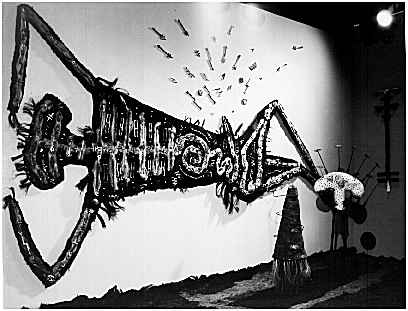
The environmental sounds fade in response to the active, "busy" viewer/listener and return in response to a quiet meditative stance. On the other hand, more aggressive, percussive voices protect the environment by responding in an agitated way to the approach of a viewer. These are not "pretty" sounds, but neither are they frightening. They are evocative natural or naturalistic sounds, but have no moral quality or implications. Examples might be buzzing of cicadas, clicking of sticks, the non-pretty vocalizations of certain birds, the guttural rumbling of buffalo. While all the sounds retain a natural quality, they may be altered electronically to enhance their strangeness to the listener. These sounds warn as animals warn against the intrustion of outsiders.
Just as the felt acts as the soft yielding ground on which the bony, linear, brittle antennas/ideograms reside, the environmental "waves of sound" are the ground for the percussive, aggressive guardian sounds. The environmental sounds seem to come from everywhere and nowhere, avoiding and enveloping the listener according to the listener's attitude. The aggressive sounds are individual voices which speak from the soul catchers themselves, underscoring the identity of the soul catchers both as individual entities and as the elements of the installation which interact most intimately with the viewer/listener.
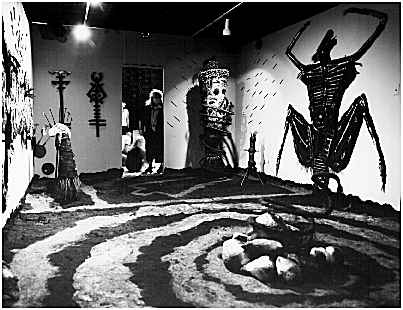
Lighting will resonate along with the sound and sculpture, to facilitate the suspension of disbelief within the total environment. Light may be subtly enhanced by the presence of a viewer, bringing things into sharper focus as the objects are approached. In their response to the presence of viewer/listeners, the sound environment and ambient lighting give the instalation as a whole the qualities of an intelligent, breathing presence.
To make an environment inside which the viewer/listener's spirituality is called into play in a non-dogmatic way, through the environment's sensitivity to the viewer's attitude and presence. It will include an iconography which is complex and comprehensive enough to be convincing, although not identified with any specific historical culture.

In the exhibit were clusters of infrared sensors and speakers placed inside walls and sculptures. The backroom technology shown above includes five specially modified Tandy Color Computers for sound generation, sensing, system control, and lithium-backup memory (to learn the space over a month). Accessories include amplifiers, endless-loop tape decks, handmade control boards, and Green Mountain Micro digital/analog control systems. Here's the original block diagram.
The original notes for the exhibit were never published in the catalog, and have been lost. Some drafts remain, which read:
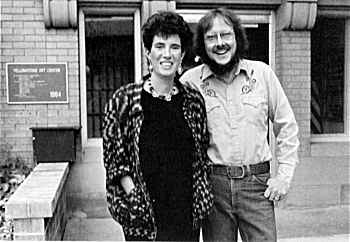
"There could easily be people behind the walls, spying through holes and responding to provocations -- but their emulations of primitivism would carry with it modern cultural baggage. Instead, I have tried to teach the amoeba-sized brains of my high-tech digital computers to respond as humas -- and have as a result almost a pre-primitivism ... all these devices are capable of. The prime product of a society can guide missiles but can hardly bang a drum."
"Sixteen infrared sensors pick up gody movement in the gallery. That information is computerized, evaluated, and stored, and used to produce the immediate and historical response, and turned into sound responses to events in the gallery. Computer evaluation is done by five Tandy 6809-based computers, a Green Mountain Micro data acquisition system, several other GMM production boards, and more than a dozen custom digital and analog circuit cards. Four endless-loop cassette players are used as well. Sound (eight channels) is reproduced from three-minute tape loops, and sound (four channels) is generated by computer algorithm. This is volume-adjusted and mixed, and fed to twenty-four sound sources throughout the hall."
The production of the sound environment for In Bocca al Lupo was made possible with much assistance. Thanks to Fernanada D'Agostino for the invitation to collaborate on this project; Sheila Miles of the Yellowstone Arts Center for accommodating this project, and Gerald Kindsfather for many preparations; The Roxbury Union Congregational Church Choir for some sounds and voices; Steve Lusk and Greg Whitchurch of Green Mountain Micro for circuit construction; Ellie Fisher for packing correspondence and braiding; Sybil at Radio Shack (Fort Worth) Customer Relations, who make some equipment travel from Tacoma to Billings on telephone request; Shannon Davenport of Davenport Electric for memory; William Walters and Greg Keily of Radio Shack (Barre, Vermont) for filling last-minute equipment requests; Daryl at Rimrock Mall Radio Shack (Billings) for the same; Dorothy Tod of the Wood Art Gallery and Deborah Chaffee of The Garage (Montpelier, Vermont) for permission to test run the sound environment; Bud Burke of Milgray Electronics for quick response on samples and orders; Rich, Deborah, Jane, Andrée, Jerry, Tom, and Claire.
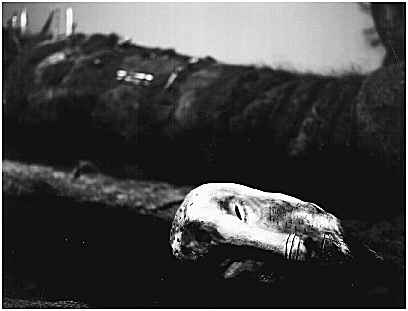
Pages produced by Malted/Media